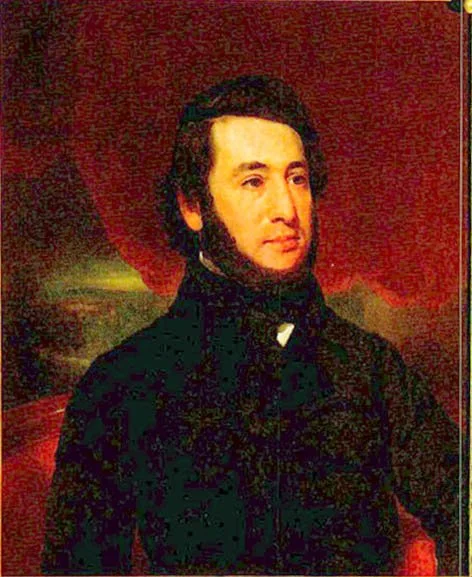Samuel Livingston Mather
1817-1890
Allen Smith Jr. (American, 1810-1890)
Loan Courtesy of the Western Reserve Historical Society
Samuel Livingston Matherh was born in 1817 in Middletown, Connecticut, the son of Samuel Mather, Jr. and Catherine Livingston. Samuel Mather, Jr. was one of forty-nine shareholders of the Connecticut Land Company, which in 1795 bought 3 million acres encompassing the Connecticut Western Reserve. By 1809 he owned four buildings. Only he of the original forty-nine shareholders sent a descendant to live here. Samuel Livingston Mather arrived in Cleveland in 1843 to set up a law practice and see to his father’s interests.
Samuel Livingston Mather was descended from Reverend Richard Mather who joined the Great Migration of Puritans from England to New England in 1635. One of Reverend Mather’s sons, Increase Mather, was a well-known Boston Puritan minister who was involved in the government of the Massachusetts colony, most notoriously, the Salem witch trials, and served as President of Harvard College from 1685 to 1701.
Increase Mather’s son, Cotton, was also a Puritan minister in Boston and an advisor to the judges during the Salem witch trials and was involved in the early beginnings of Yale University.
Samuel Livingston Mather made his career in Cleveland with the Cleveland Iron Mining Company, which was founded in 1846 by a group of investors he headed. Although the company’s first years were difficult, since the cost of shipping was high until completion of the Sault Ste. Marie canal in 1855, the company soon flourished. Part of the success was due to the company’s prescient decision to modernize; in 1877 it invested in machinery that enabled underground excavation since surface mines were rapidly depleting. They also pioneered the use of electricity at the mines as well as hydroelectric and coal-fired generators which gave them a competitive edge.
Samuel Livingston Mather and his first wife, Georgiana Pomeroy Woolson, had a son Samuel whose portrait hangs adjacent to this one in the reading room. With his second wife, Elizabeth Gwinn, Mather had a son William Gwinn Mather. Both sons distinguished themselves as important industrialists and philanthropists in Cleveland.
In 1872, Samuel Livingston Mather was one of the founders of the Union CLub and served as President in 1879-1880. He was also prominent in the founding of the Natural History Museum.
ABOUT THE ARTIST: Allen Smith was a New York trained artist who settled in Cleveland in 1841. He swiftly rose to prominence as a portrait and genre painter. Like all artists, he suffered greatly during the Panic of 1857, and this circumstance forced him to take a job in James F. Ryder’s studio where, according to his employer’s advertisements, he produced the “best oil painted photographs in Ohio”. With eight children to support, Smith collaborated with other photographers in subsequent times of need, both in Cleveland and Cincinnati, but ended his days happily in Lake County, painting landscapes in the Big Creek Valley. He is credited as having designed the first Michigan state flag.
